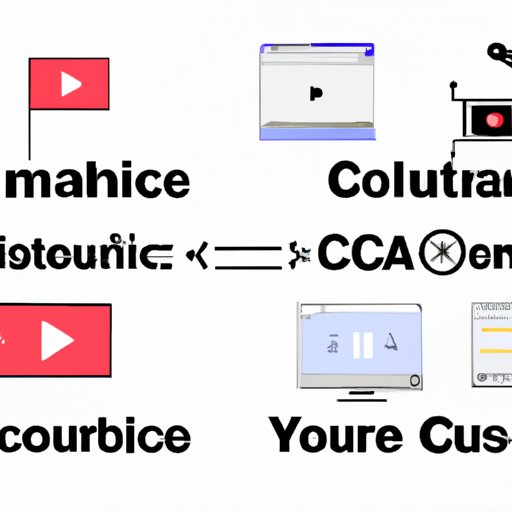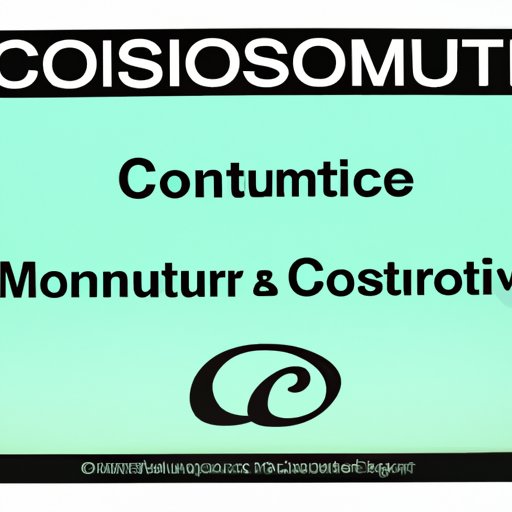Introduction
As a content creator on YouTube, you may have wondered about the legality of using music in your videos. After all, there are lots of great songs out there that could really add to your video’s impact. However, it is important to understand the legal implications of using music in your videos so that you don’t get into any trouble. This article will provide an overview of the legalities surrounding the use of music in YouTube videos.

Research Creative Commons Licensing and How to Attribute Music in YouTube Videos
The first thing to understand is Creative Commons Licensing. Creative Commons (CC) is a non-profit organization that allows content creators to share their work with others legally. The CC licenses allow content creators to specify how their work can be used, shared, and adapted by others. There are several different types of CC licenses, and each has its own set of restrictions. For example, some licenses may require attribution or prohibit commercial use. It is important to read the terms of the license carefully before using any CC-licensed material.
Once you find a song that you would like to use, you must make sure to properly attribute the artist in your video. YouTube requires that you provide the title of the song, the artist’s name, and a link to the source of the song in the description of your video. This is a standard practice for all CC-licensed music.
Explore Different Music Libraries and What Types of Music They Offer
There are many different music libraries available online, each offering a variety of songs in different genres. Some popular music libraries include SoundCloud, Free Music Archive, and Jamendo. These libraries typically offer both free and paid music, so you can pick the type of music that best suits your needs. Many of these libraries also offer access to exclusive tracks and remixes that you won’t find anywhere else.
When choosing music for your videos, you should consider the genre, tempo, and mood of the song. For example, if you are creating a travel video, look for upbeat, positive music that will evoke a sense of adventure and exploration. If you are creating a more serious video, you may want to choose a slower, more reflective song that will give your video a somber tone.
Understand the Difference Between Royalty-Free and Copyrighted Material
It is important to understand the difference between royalty-free and copyrighted material when using music in your YouTube videos. Royalty-free music is music that has been released under a license that allows you to use it without having to pay royalties. Copyrighted material, on the other hand, is protected by copyright law and cannot be used without permission from the copyright holder.
In order to determine which type of music you are using, you should check the license agreement for the song. Most music libraries will list the type of license for each song, so make sure to read through the agreement carefully before using the music in your video.
Utilize YouTube’s Audio Library for Free Music Options
YouTube offers a free audio library that contains over 150,000 tracks from various genres. All of the music in the library is completely royalty-free and can be used for any purpose. In addition, the library includes sound effects and other audio clips that can be used to enhance your videos.
To access the library, simply go to the “Creator Studio” section of your YouTube account. From there, click on the “Audio Library” tab and browse through the selection of songs. Once you find a song that you like, simply download it and add it to your video. You can then adjust the volume of the song to fit your video.
Investigate Other Sources of Free or Low-Cost Music
In addition to YouTube’s audio library, there are many other sources of free or low-cost music. Popular sources include Epidemic Sound, Pond5, and Audiosocket. Each source offers a wide selection of music in various genres, so you can find the perfect song for your video.
When choosing a music source, it is important to consider the pros and cons of each option. For example, most free music sources have limited selections and may not have the exact type of music you are looking for. Paid sources, on the other hand, often have larger selections and may offer better quality music. Ultimately, the choice of which source to use will depend on your budget and the type of music you need.
Conclusion
Using music in YouTube videos can be a great way to enhance your video and engage viewers. However, it is important to understand the legalities surrounding the use of music in videos so that you don’t get into any trouble. This article has provided an overview of the legalities surrounding the use of music in YouTube videos, including Creative Commons licensing and how to attribute music in YouTube videos, different music libraries and what types of music they offer, and sources of free or low-cost music.
If you are looking for more information about using music in YouTube videos, there are plenty of resources available online. YouTube’s Creator Academy offers tutorials and tips on using music responsibly, and the Creative Commons website provides detailed information about the various types of CC licenses. Additionally, there are many websites and blogs dedicated to helping content creators navigate the complexities of music licensing.
(Note: Is this article not meeting your expectations? Do you have knowledge or insights to share? Unlock new opportunities and expand your reach by joining our authors team. Click Registration to join us and share your expertise with our readers.)
